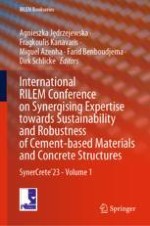2023 | OriginalPaper | Buchkapitel
Slag or Reacted Binder, Which Dissolves First in Sulphuric Acid?
verfasst von : Nana Wen, Arne Peys, Tobias Hertel, Vincent Hallet, Yiannis Pontikes
Verlag: Springer Nature Switzerland
Aktivieren Sie unsere intelligente Suche, um passende Fachinhalte oder Patente zu finden.
Wählen Sie Textabschnitte aus um mit Künstlicher Intelligenz passenden Patente zu finden. powered by
Markieren Sie Textabschnitte, um KI-gestützt weitere passende Inhalte zu finden. powered by
